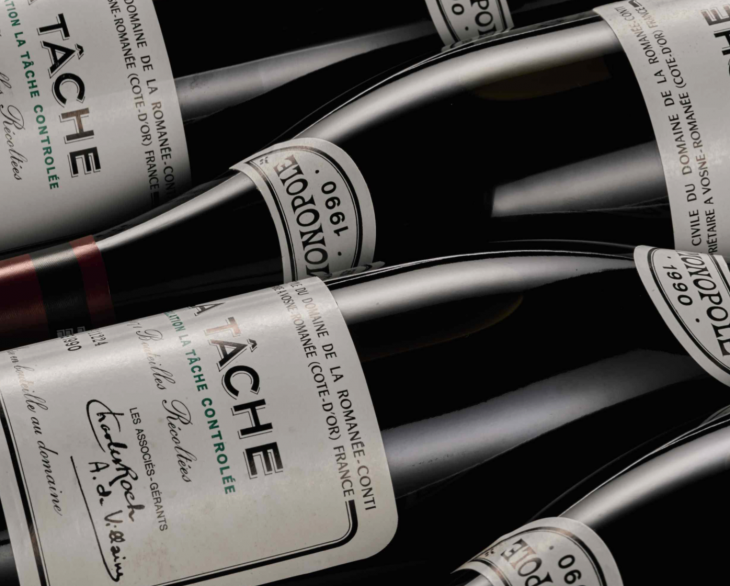
I was thrilled to be invited to a rare tasting of a vertical of Domaine de la Romanée-Conti including a 1950 La Tâche in magnum in Paris. I asked my French host, “What is the provenance of these bottles?” He looked at me as though I was asking about the color of his underwear. “This bottle is over 60 years old, of course we don’t know,” he replied.
Quietly, I noted several American strip labels on the bottles of some of these wines indicating that these bottles had been sent to the US and found their way back to France. Others had the mark of various auction houses on the back of the bottles. Although we were enjoying these wines in France, these wines had clearly traversed the world before returning to their home country! I examined the cork and noted all were original and none were re-conditioned (topped up with younger wine and the old cork replaced with a new one). I was surprised that even in Paris I was the only one at a table of 12 wine lovers who cared so much about a wine’s origin.
An incident similar to this occurred in Hong Kong recently. My generous host wanted to open a 1959 Château Margaux for a small group of friends. He loved this wine and over the years had accumulated 18 bottles at auction, a few bottles at a time from different sources. No one asked about the wine’s provenance but my Chinese host who is not only a great collector but an excellent taster, insisted on opening three bottles before he found one that he felt was genuine. He whispered to me that he thought the first two that he opened were fakes. He was very nonchalant and exclaimed, “What can you do? Enjoying old wines means taking risks.”
Very few wine lovers will bring up the possibility of fake or potentially fake wines because we don’t want to question or embarrass the host. But it is becoming a growing problem as fake wines that circulate among fine wine merchants and auction houses are clearly finding their way into Asian collectors’ cellars. Court cases initiated by wine collector Bill Koch since 2006 against a German fine wine dealer, Hardy Rodenstock, began to put doubt in people’s minds. And more recently, the FBI-led arrest of Rudy Kurniawan has confirmed that there is potentially hundreds of millions of dollars worth of fake wines circulating in wine circles via dealers and auction houses.
The trend at auction now is to hold more and more ex-cellar sales. That means the auction house sources the wine direct from the cellars of top producers such as Château Lafite Rothschild, Château Latour or Domaine Liger-Belair and Domaine Dujac to eliminate any possibility of fake wines. With collectors, this is a huge benefit, since auction houses have never claimed to guarantee the provenance of its items for sale.
Sotheby’s has been a leader in this trend. Their most famous sale was in 2010, an ex-cellar Lafite sale held in Hong Kong during the height of the Lafite frenzy in China. The sale achieved US$11 million, way above their expectations. Subsequently, Sotheby’s has held ex-cellar sales from Mouton Rothschild, Haut-Brion, Cheval Blanc and Domaine Drouhin. Other auction houses are now all vying for ex-cellar lots of top producers around the world.
Today in Hong Kong, Sotheby’s will offer an ex-cellar, first-ever wine auction dedicated entirely to one winery: Chateau Palmer from Margaux, Bordeaux. There will be 220 lots spanning 87 years and one unique lot that includes a barrel of 2015 Château Palmer and a private visit and dinner for 8 people at the chateau. With more and more châteaux offering wines at auction, the auction model is changing: from a secondary trading market of fine wines to one that is a primary trading vehicle for producers to directly reach end consumers. For buyers, this is great news; buying ex-cellar wines is one sure way to avoid fakes.
image copyright: Sotheby’s









